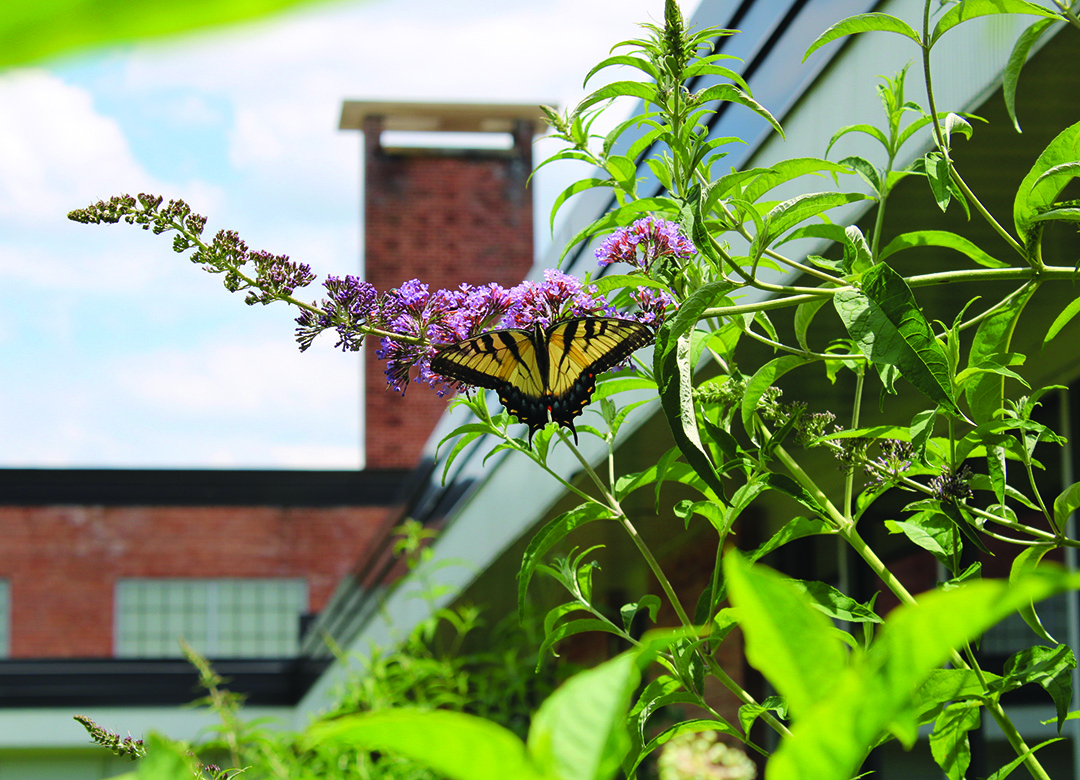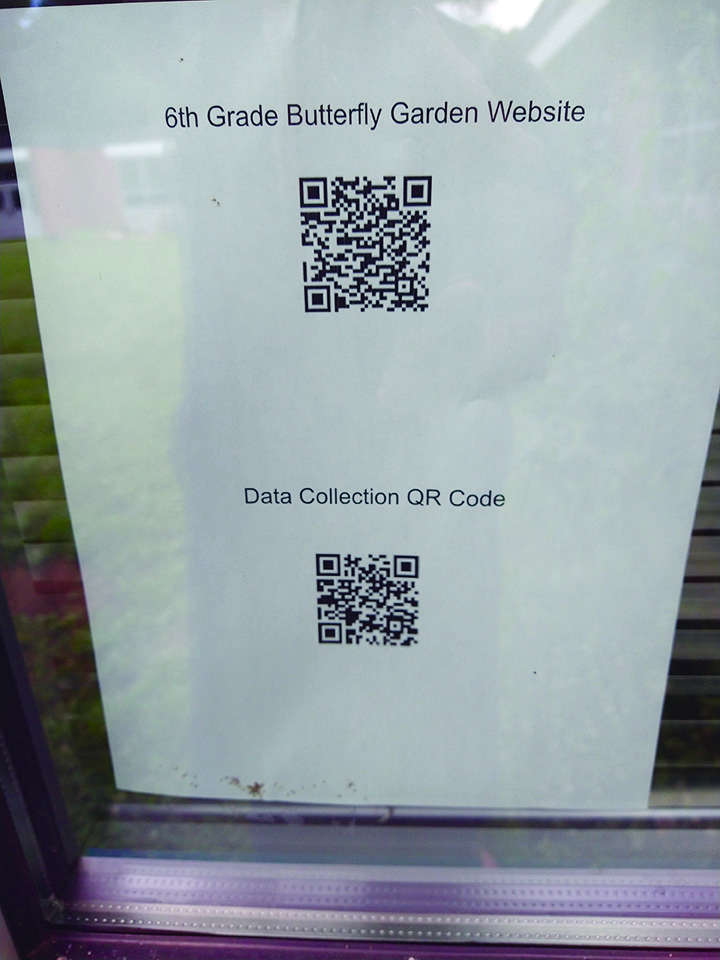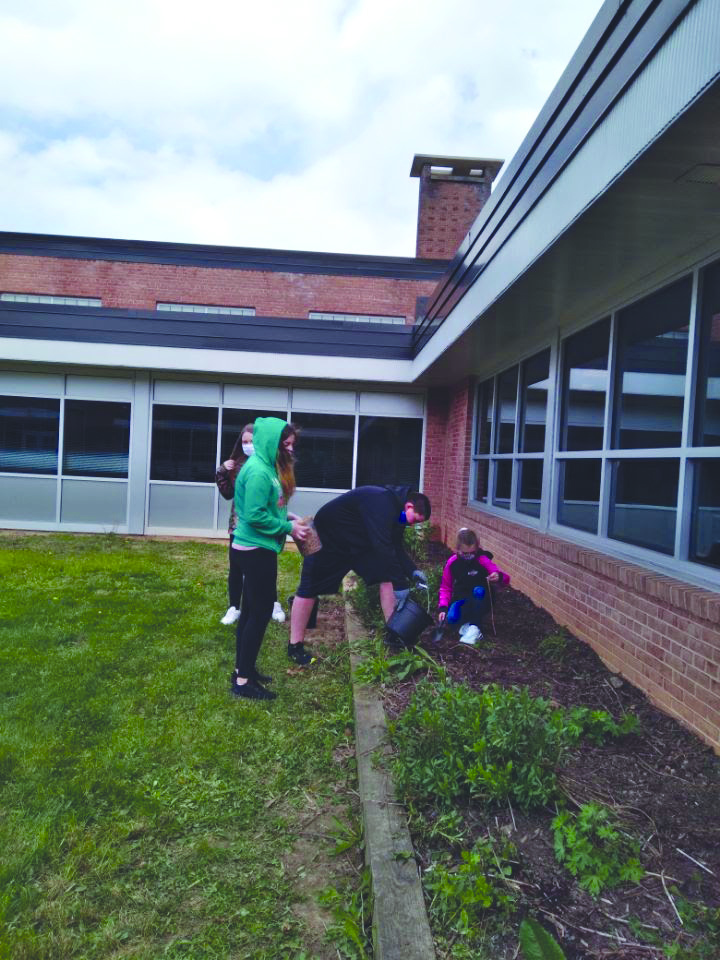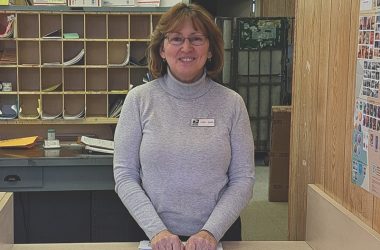
A tiger swallowtail butterfly gathers nectar last Friday from the purple butterfly bush planted by Hancock sixth graders as part of their pollinator project. photos by Kate Shunney
by Kate Shunney

Milkweed in bloom attracts monarch butterflies.

Orange Butterfly weed in bloom.
Attention on the health and importance of pollinators has been growing in recent years, as the number of bees and butterflies are declining at a rate that concerns scientists and farmers.
Pollinators are insects or creatures that spread pollen from plant to plant, making them grow and thrive. Plants depend on pollinators and pollinators depend on plants to survive.
Sixth graders at Hancock Middle Senior High School this year investigated the decline of pollinators and what they could do to help sustain them.
Students were dedicated to their Service Learning Project, which involved many parts, staff members and lots of effort throughout what they called “this crazy school year.”
Community members can visit and enjoy the fruits of their labor and learn more at Hancock Middle Senior High School’s pollinator gardens, which are blooming right now.
Lengthy flower beds along the inside perimeter of the school courtyard are currently bursting with green growth and colorful blooms, along with key visitors the students wanted to serve – butterflies, bees and other pollinators.

A sign at Hancock Middle Senior High School’s pollinator garden gives a QR code that visitors can scan with a smartphone to access students’ website about their planting and learning project.
A sign in the school window near the eastern end of the flowerbeds provides a QR code that visitors can scan with a smartphone. The code will take them to the students’ website about the project, which shares more information about the role of plants, what plants are in the beds and why. The site can be found at: https://sites.google. com/wcps.k12.md.us/ hancockmiddleschools6th gradess/home.
Early in June, students and Science teacher Sara Crosten put the finishing touches on the website in order to share it with the public. Meanwhile, the pollinator garden grew into its purpose.
Students, on the website, write about their mission:
“For our project, we have been researching pollinators and their declining populations, specifically, Monarch Butterflies. We have been collaborating in person and via zoom with the Fairview Outdoor School teachers to learn more about these stressed populations.”
In previous years, Hancock Social Studies teacher Mr. Ben Draper developed gardens at our school. He retired at the end of the school year, but students wanted to build on what he had established.
“We have decided to carry on his hard work in the gardens and are focusing on bringing in resources to help build up the local butterfly populations,” the sixth graders wrote about their project.

Earlier this year, Hancock students weeded and cleared garden beds at their school to prepare it for planting pollinator-friendly flowers.
“We took action to help the threatened pollinators populations in the area. We planted flowers like milkweeds, sunflowers, zinnias, and cosmos. We trimmed up the butterfly bush that was already planted. We removed the weeds from the garden. We made feeders for butterflies and put them in the garden. The butterflies can drink and eat here during their migration,” the students wrote on their website. “We took action to increase butterfly populations that are going down, especially the Monarch. We planted flowers with the colors and pollen Monarchs are attracted to. This way they can survive and the population will increase. We will put lemon peels in the butterfly feeders in the winter to attract them,” students said.
In one of the video reflections viewable on the student website, one Hancock student said she not only wanted to attract butterflies, but also make the outside of the school more beautiful. She said members of the school’s gardening club, which met on Fridays, helped with the work.
“I want to see butterflies and bees on the flowers,” she said.
Maryland pollinators
“Pollinators in Maryland are bees, bats, hummingbirds, beetles, butterflies, and moths. There has been a decline in these populations because of loss of habitat due to human activity, natural disasters, and climate change,” students wrote. “You can help by planting more native plants, increasing the biodiversity, planting for all three seasons, protect pollinator nesting sites, use less pesticides, and build habitat resources. This could help raise the population and raise the food population. By doing so, you can help raise the population of other animals.”

Purple bee balm blooms at Hancock Middle Senior High School. The plant is a favorite of pollinating bees.
You can help – go visit
Students who planned and planted the gardens are asking for the community’s help in their mission to support and protect pollinators.
“We are looking for help from community members to document the butterflies seen in our garden over the summer. Community members can scan a QR code found in the windows by the garden and share their observations. We are hoping to see improvements in their population size,” students told The Hancock News.
With colorful plants in bloom now, a visit to the students’ garden beds is almost certain to pay off with the sight of a butterfly or bee enjoying the fruits of local youth’s hard work.








